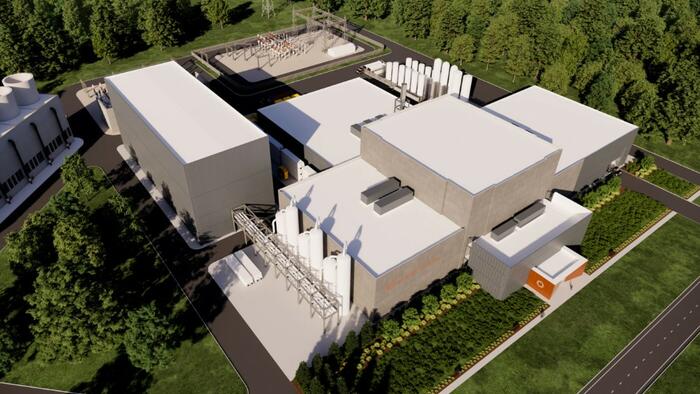Nuclear energy adoption is experiencing rapid acceleration, and Virginia is positioning itself as a leader in this energy revolution by introducing what could be the world’s first commercial fusion power plant. According to reports from the Virginia Mercury, Governor Glenn Youngkin recently announced that Commonwealth Fusion Systems (CFS), established in 2018 in Cambridge, Massachusetts, has chosen Chesterfield County’s James River Industrial Park for the construction of this groundbreaking facility. Designed to generate 400 megawatts of electricity—enough to power approximately 150,000 homes—the fusion power plant is anticipated to become operational by the early 2030s, paving the way for cleaner energy solutions in the state and addressing surging energy demands.
Fusion power is regarded as a cleaner and more sustainable alternative to traditional nuclear fission, as it mimics the energy production processes of the sun. This innovative technique harnesses the power generated by fusing hydrogen isotopes under extreme heat and pressure, using powerful magnetic fields to create electricity via steam turbines, with helium as the only byproduct. This process presents a way to produce energy without the emissions typically associated with fossil fuels, thereby lending itself to climate change mitigation efforts. As Virginia grapples with the demands of energy-intensive data centers that support major technology firms, fusion power stands out as a promising solution.
Reports indicate that energy demand in Virginia could potentially triple by 2040, driven largely by the state’s burgeoning data center sector, which may require up to 30,000 megawatts of power, contingent upon infrastructure enhancements. In response to this projected surge, Dominion Energy and Appalachian Power are actively exploring various energy generation strategies, including modular nuclear reactors, wind, solar, and natural gas. The emphasis on diversifying energy sources reflects a growing understanding that an expansive energy portfolio will be necessary to meet future demands.
The development of the fusion power plant highlights the collaborative efforts that have taken place between CFS and Virginia state officials. The project received a substantial financial boost in the form of $2 million in funding from both state and county sources, as well as a tax exemption for equipment and backing from the Department of Energy (DOE). Governor Youngkin has expressed optimism regarding the economic implications of this initiative, suggesting that it could spur “billions” of dollars in investment and create “hundreds” of jobs in the region.
CFS is currently working on its SPARC demonstration plant in Massachusetts, which aims to advance the technology needed for the larger facility in Virginia. Notably, CFS’s approach differs from that of California’s Lawrence Livermore National Laboratory, which has pursued laser-based fusion technology. Instead, CFS utilizes a tokamak—a donut-shaped device designed for containing and fusing particles—as the basis of its energy generation methods. This choice of technology reinforces CFS’s commitment to safety, with CFS director of tokamak operations, Alex Creely, emphasizing that fusion energy generates no long-lived waste and poses no meltdown risks, providing a stable energy source that communities can embrace with confidence.
As Virginia takes these steps toward harnessing fusion energy and addressing its energy needs, the commitment of nuclear startups, such as Oklo, to collaborate with local data centers underscores the rising interest in innovative energy solutions. These developments not only reflect a shift towards more sustainable energy production methods but also hint at an exciting evolution in the energy landscape, as states like Virginia position themselves at the forefront of the nuclear energy renaissance.

